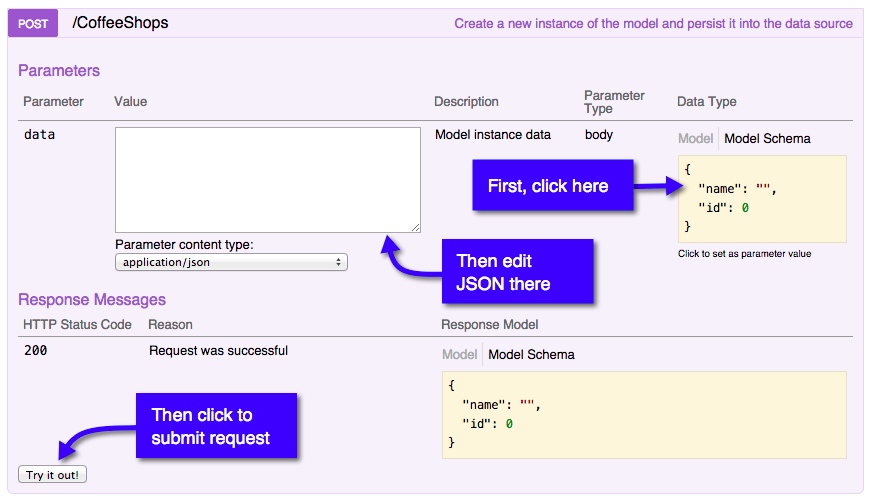

Even for custom REST apis, the consumption in the client side is really simple. This, not only helps i faster development and lesser codebase, but also gives a client side developer to develop an entire app without doing anything specific to server (considering only CRUD operations). The rest api functions in the server are also available in the client side.

You can share your same model with both client and server. But loopback gives you the power of a full-stack development. You may get frameworks for client side development and so can be found for server side. Great ORM with lot of available connectors in the communityĬommon disadvantage with all ORMs are, you end of the day end up using raw sql in many placesĪdvantages of Loopback FullStack development Lot of additional tools given by StrongLoop Not recommended to start JS learning with it The opinionated architecture may not serve all Hard to use in huge and long term projects A common misconception is, loopback is all about server side but actually one of its biggest advantage is it provides a glue to attach your client with server so that you never have to bother about ajax calls from the client to your server.īefore giving a detailed information, here is a small table showing a glance of the pros and cons of Loopback to make your life easier.
Loopback api code#
Loopback is a full-stack JavaScript framework which majorly helps you to develop your backend and also helps sharing the code and creating services in client side. Though majority of the readers of this article will already know what exactly loopback is but for the people who don’t have a clear picture yet, here is a small description. So, please don’t take my words as a final commitment, rather analyse them with your own scenario, use case and feasibility. It’s always subjective to compare frameworks. I have been using loopback since a while now and have noticed, the other articles probably didn’t give a two way view. protocol: Tells clients connected to devServer to use the provided protocol.Seems there are quite a few posts in different blogs and forums about loopback benefits.port: Tells clients connected to devServer to use the provided port.
Loopback api password#

Content not from webpack is served from '/path/to/public' directory When the server is started, there will be a message prior to the list of resolved modules: Project is running at: const path = require ( 'path' ) ĭirectory : path. Here's a rudimentary example that gzips and serves everything from our public/ directory in the project root: This set of options is picked up by webpack-dev-server and can be used to change its behavior in various ways. Migration guide from v3 to v4 can be found here. This page describes the options that affect the behavior of webpack-dev-server (short: dev-server) version >= 4.0.0. See the development guide to get started. Webpack-dev-server can be used to quickly develop an application.


 0 kommentar(er)
0 kommentar(er)
